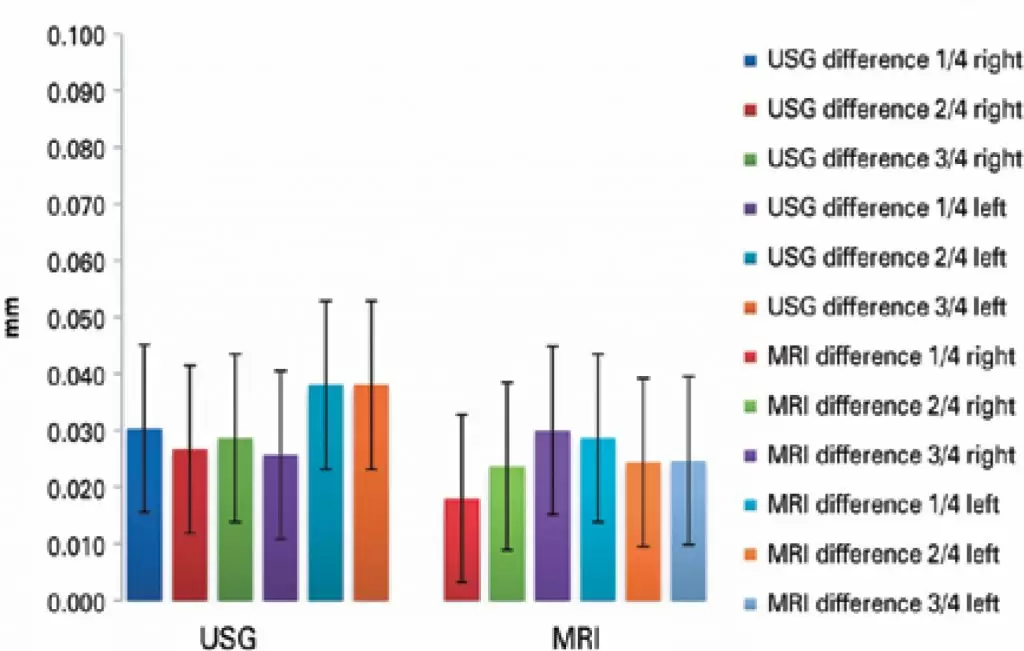einstein (São Paulo). 30/May/2019;17(3):eAO4579.
Ultrasonography and magnetic resonance imaging of elbow ligaments: a comparative study
DOI: 10.31744/einstein_journal/2019AO4579
ABSTRACT
Objective:
To determine the value of ultrasonography in elbow ligament assessment compared to magnetic resonance imaging.
Methods:
A prospective single-center study involving 30 volunteers with no elbow joint changes. Two experienced ultrasound specialists evaluated both elbows of each volunteer, resulting in 60 evaluations per physician and totaling up 120 evaluations. Magnetic resonance images were obtained using a 3-Tesla machine and evaluated by two experienced radiologists, totaling up 120 exams. Each examiner assigned subjective, zero-to-5 scores to ligaments imaged, where zero corresponded to non-identified ligament and 5 to visualization of the entire ligament. The level of significance was set at 5%. Bland-Altman dispersions and plots were prepared for each pair of measurements obtained.
Results:
All ligaments were amenable to sonographic identification; scores of 4 or 5 were assigned by examiners based on ligament visibility. Ligaments could also be identified using magnetic resonance imaging and were assigned scores of 5 by examiners. All ligaments were described as intact and healthy by all four examiners. Comparative analysis of elbow ligament sonographic and magnetic resonance imaging findings did not differ significantly.
Conclusion:
Ultrasonography and magnetic resonance imaging can be considered equivalent modalities for elbow ligament assessment in the hands of experienced examiners.
498


